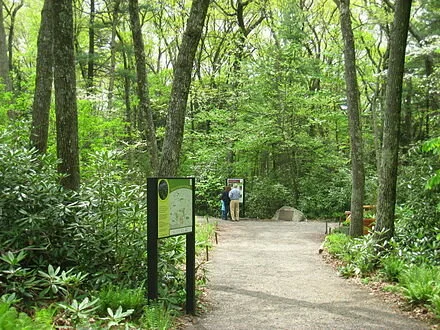
New England still makes (expensive) things
Bright red locates Framingham
From The New England Council (newenglandcouncil.com)
“Sanofi opened the doors of its 100,000-square-foot digital bio-manufacturing facility in Framingham, Mass., on Oct. 15. The French drug-manufacturing company is one of Massachusetts’s largest life-science employers.
Sanofi’s new facility is among the first digitally enabled continuous manufacturing sites, making the building itself about a fifth the size of traditional facilities {in the sector}. The new building features state-of-the-art technology that connects the production process with research and development to better improve the commercialization of important medicines. The acceleration of their production capabilities is a key pillar in Sanofi’s ambition to establish “the gold standard in the bio-pharmaceutical industry.”
“‘We have been investing for some years to prepare for Sanofi’s future. Our Framingham facility leads the way in delivering the next generation of biologics manufacturing, leveraging intensified, continuous processing in a fully integrated digitally powered facility,’ said Philippe Luscan, executive vice president for global industrial affairs at Sanofi. ‘This opening demonstrates we are at the leading edge of innovation and manufacturing excellence, helping us to shape the future of both our company and the industry.”’
Garden in the Woods, overseen by the New England Wild Flower Society, features the largest landscaped collection of native wildflowers in New England. It is in Framingham’s Nobscot section, off Hemenway Road.
Tim Faulkner: Kill your lawn and go native to help the environment
Via ecoRI News (ecori.org)
Fast fact: New England uses about 30 percent of its potable water on lawn care.
You probably know by now that the typical U.S. lawn with thick, green grass and manicured hedges is horrible for the environment.
In addition to pollution from mowers, trimmers and leaf blowers, chemically treated lawns wipe out all vegetation, worms, and insects, to grow a single species of grass. Those fertilizers derived from fossil fuels create toxic runoff, and contribute to a range of environmental and health problems such as asthma and cancer in humans and pets.
“Unfortunately, it’s a pretty disastrous landscape,” said horticulturist Mark Richardson, director of the botanic garden at the New England Wild Flower Society, based in Framingham, Mass.
Richardson describes the constant “mow-and-blow” maintenance required to maintain a traditional lawn as “soul-sucking.”
“I really feel our lawns and gardens should contribute to our society, and the best way to do that is to kill you lawn,” he said.
There are ways to replace the modern lawn. The University of Rhode Island-trained turf and wildflower expert suggests transitioning from the golf course-inspired carpet to a unique landscape, one with a rich ecosystem of natural grasses, wildflowers and shrubs. It doesn’t hurt that these living landscapes are also great for storing carbon and a haven for beneficial insects and pollinators.
Each process requires some upfront labor, but once done there is considerably less maintenance and watering for a habitat accustomed to temperamental New England weather.
Experiment. The simplest approach is to stop mowing and see what grows. “Sometimes a meadow shows up,” Richardson said.
He recommends dispersing seed packets of native wildflowers and grasses and planting a few perennial shrubs. Spot-treatment with pesticides may be necessary.
Solarization. The most effective approach to a natural landscape is to start with a blank slate. Removing or destroying the current lawn, invasive weeds and other undesirable vegetation is key. Thick, clear plastic sheeting left for six weeks creates sufficient heat to kill plants but not the beneficial microbes. Landscape fabric or cardboard covered with leaf litter or mulch can achieve similar results.
Mechanical. Lawns can also be removed with a sod cutter, which can be rented from an equipment supplier or hardware store. Smaller areas of turf can be removed with a pitchfork and shovel. The work can be done in one day, but there is a risk of losing soil while leaving behind weed remnants that may regrow.
Chemical. Chemicals can be the fastest method to kill grass. Some are safer than others. And organic isn't always safer than inorganic. Acetic acid, an organic pesticide that is a popular alternative to synthetic pesticides, is similar to a concentrated vinegar but also has health risks.
Start small. There's no need to covert an entire lawn at once. Start with a section and experiment with these different techniques and plantings. Converting a small area still saves water, time and money on lawn care.
What to plant. There’s plenty to chose from, and much of it depends on how the space will be used. There are grasses, such as Pennsylvania sedge, and fruit, such as wild strawberries, that are durable and can planted in walkable areas.
Purple lovegrass tolerates salt and drought, and offers vivid color.
Others plants are suitable for a mix of shade and sun, as well as a tolerance for drought. Some can be grown between stones and bricks in a walking path, or durable enough for a parking area, such as little bluestem.
For native plantings and where to buy them search the URI Native Plant Guide.
Search here for a list of landscape professionals in your area who can assist with the conversion process.
Tim Faulkner is on the staff of ecoRI News.


